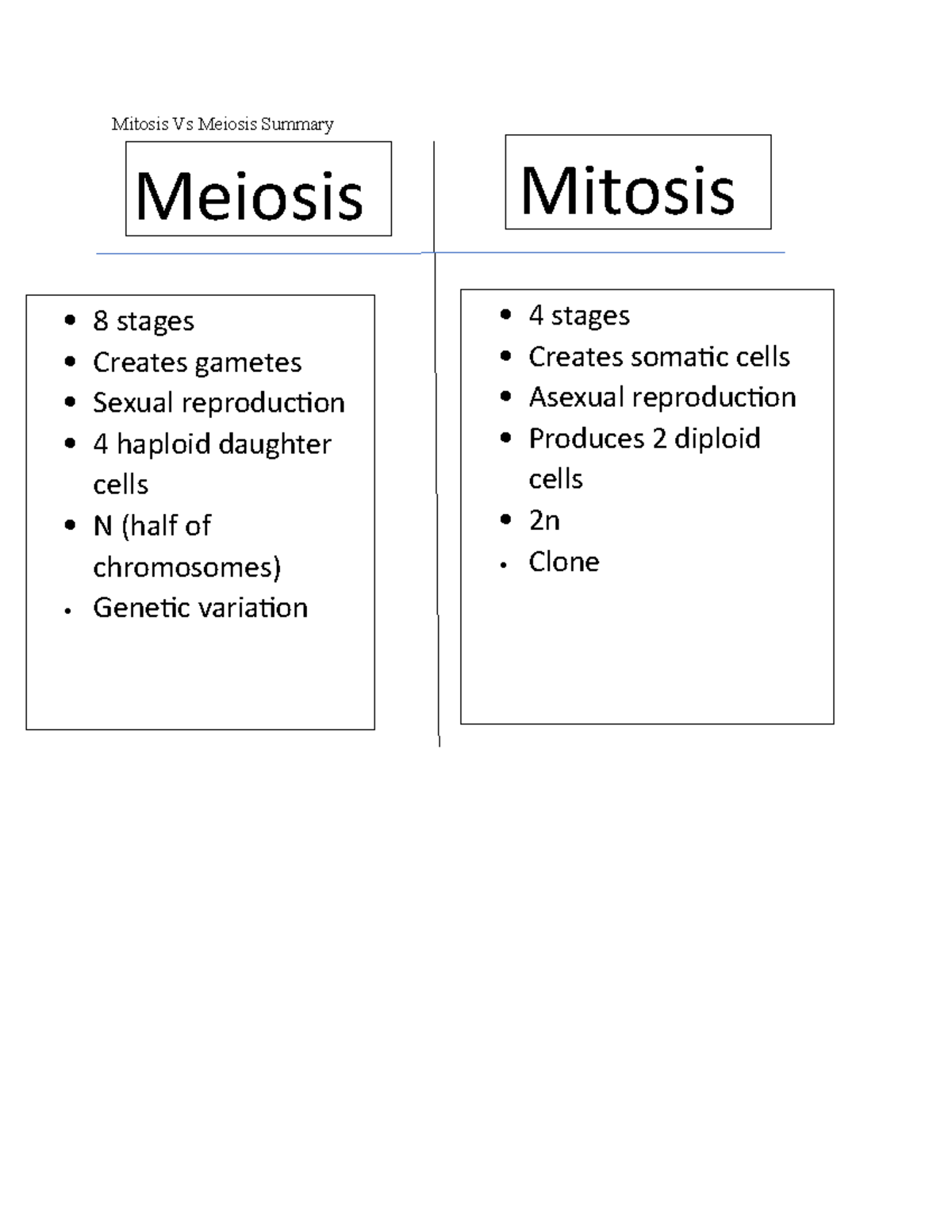When it comes to understanding cell division, mitosis and meiosis are two fundamental processes that play a crucial role. Mitosis is a type of cell division that results in two daughter cells with the same number of chromosomes as the parent cell, while meiosis is a type of cell division that results in four daughter cells with half the number of chromosomes as the parent cell. Both processes are essential for growth, repair, and reproduction in living organisms.
One way to reinforce the concepts of mitosis and meiosis is through the use of worksheets. These worksheets are designed to help students visualize and understand the different stages of each process, as well as the key differences between them. By completing these worksheets, students can test their knowledge and gain a deeper understanding of how cells divide and reproduce.
Mitosis vs Meiosis Worksheet
One of the main differences between mitosis and meiosis is the number of divisions that occur. In mitosis, there is only one division, resulting in two identical daughter cells. This process is essential for growth and repair in multicellular organisms. Meiosis, on the other hand, involves two divisions, resulting in four daughter cells with half the number of chromosomes. This process is crucial for sexual reproduction and genetic diversity.
Another key difference between mitosis and meiosis is the genetic variation that occurs. During mitosis, the daughter cells are genetically identical to the parent cell. However, during meiosis, genetic recombination and crossing over occur, leading to genetic variation among the daughter cells. This variation is essential for evolution and adaptation in organisms.
Worksheet activities may include labeling the stages of mitosis and meiosis, comparing and contrasting the two processes, and solving problems related to chromosome number and genetic variation. These activities help students engage with the material and reinforce their understanding of cell division.
Overall, mitosis and meiosis worksheets are valuable tools for students to learn about these essential processes in biology. By completing these worksheets, students can deepen their understanding of how cells divide and reproduce, as well as the importance of genetic variation in living organisms. Through hands-on activities and visual aids, students can grasp the complex concepts of mitosis and meiosis with greater clarity.
In conclusion, mitosis and meiosis worksheets are effective resources for teaching and learning about cell division. By utilizing these worksheets, students can enhance their knowledge of these fundamental biological processes and appreciate the intricate mechanisms of growth, repair, and reproduction in living organisms.
